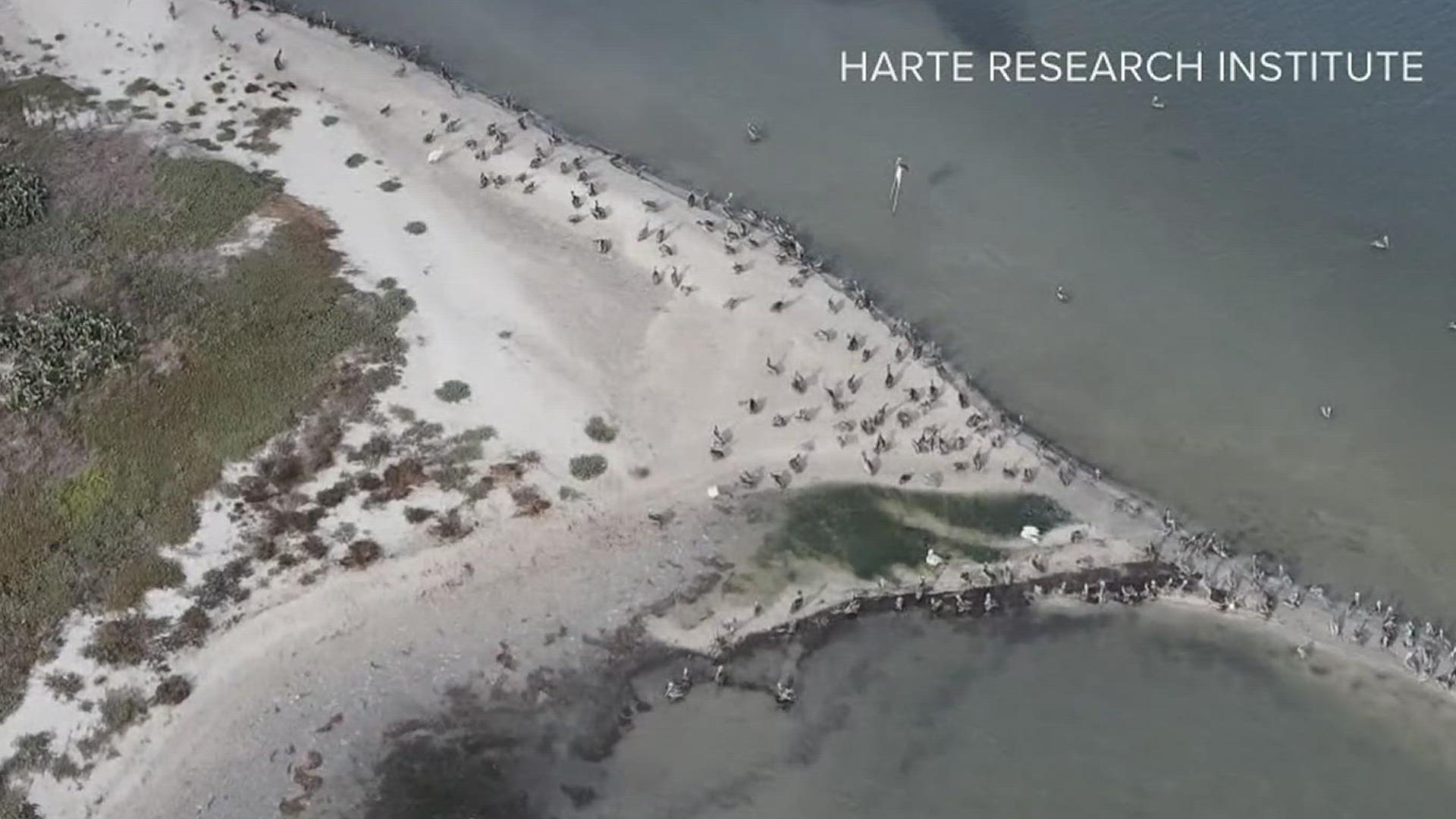CORPUS CHRISTI, Texas — Researchers from the Harte Research Institute began studying waterbird behavior on our gulf islands two years ago, but Tropical Storm Alberto and Hurricane Beryl are bringing clarity to their work.
"Birds have been getting hit by storms since time began, why are we concerned about them now? The answer to that is partly, we're changing the landscape that they had," Dr. Dale Gawlik, Department Chair for Conservation and Biodiversity at the Harte Research Institute for Gulf of Mexico Studies at Texas A&M-Corpus Christi said.
That's one of the goals that research groups -- in partnership with The Colony Island Network Design and Implementation Project -- have been working on these past two years to achieve.
"Where do we need islands, how many, how high," Gawlik said. "And this storm gave us some information on that because after the skimmers failed from Alberto, they re-nested on an island and it was one of our created islands which was kind of cool."
Tropical Storm Alberto heavily influenced the birds to move to the island, which was formed from dredge material.
"The big effect that's going to have on bird population is storm surge, so water levels," researcher David Essian said. "What we saw with the two storms that we documented this year, was that the birds that were affected the most were ground nesting birds"
Although it would be nice for researchers to see the 600 or so bird nests in person, researcher Rostam Mirzadi told 3NEWS modern day technology and drone usage, is at the center of the project.
"We'll take the SD card out of the camera and that will be used to download all the images, which will then be kind of turned in to maps and used to track a lot of these nests," Mirzadi said. "It has a really good GPS in the camera itself, but to increase the accuracy we do also have an RTK GPS which gets well below two centimeter accuracy."
The researchers also told 3NEWS that some of the nests for black skimmers and royal terns are right in our backyard in the upper Laguna Madre and even one in Nueces Bay. They said the new generation has already began to thrive as of the middle of August, many of these nests, already had chicks.

